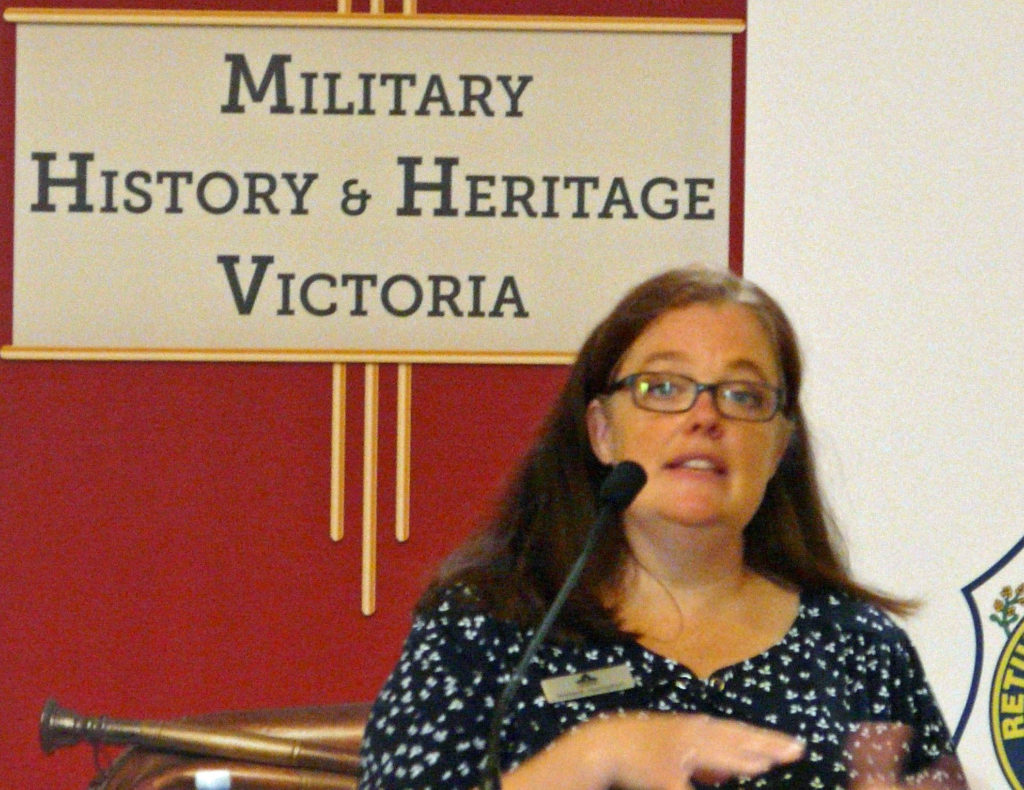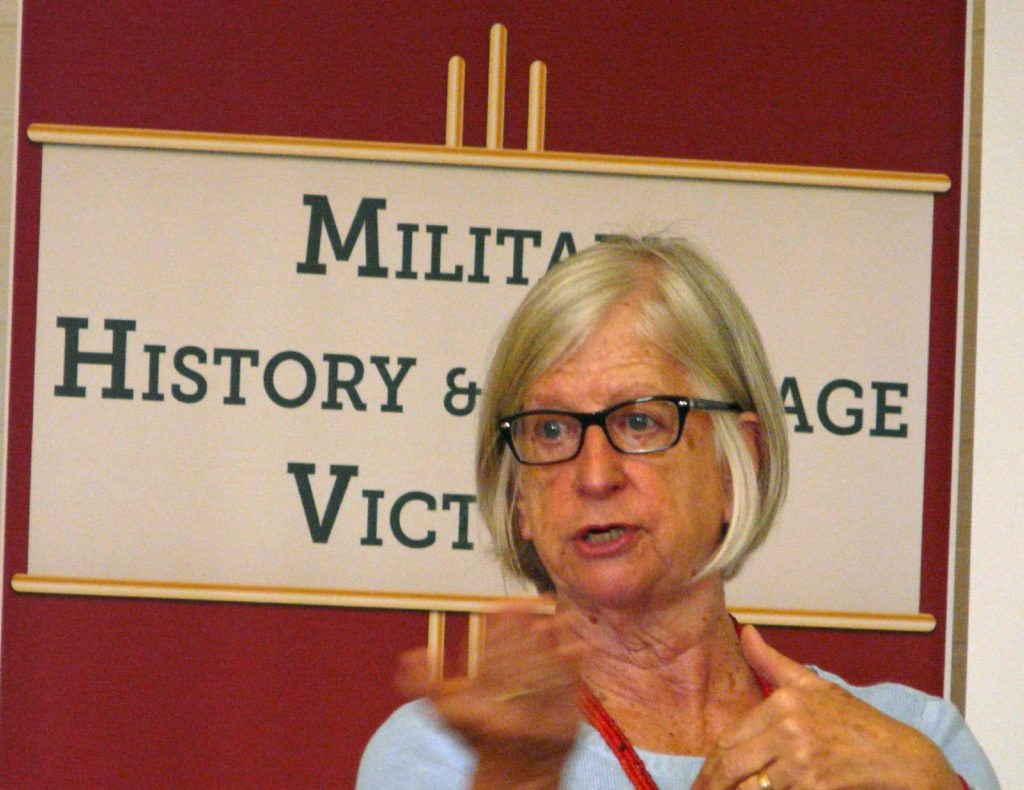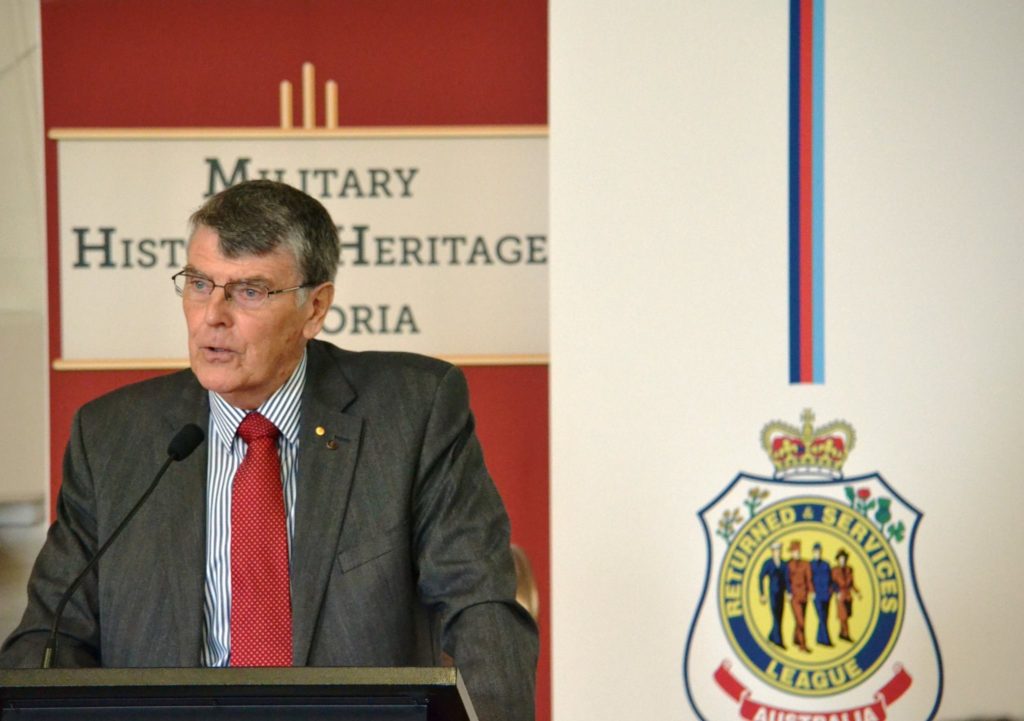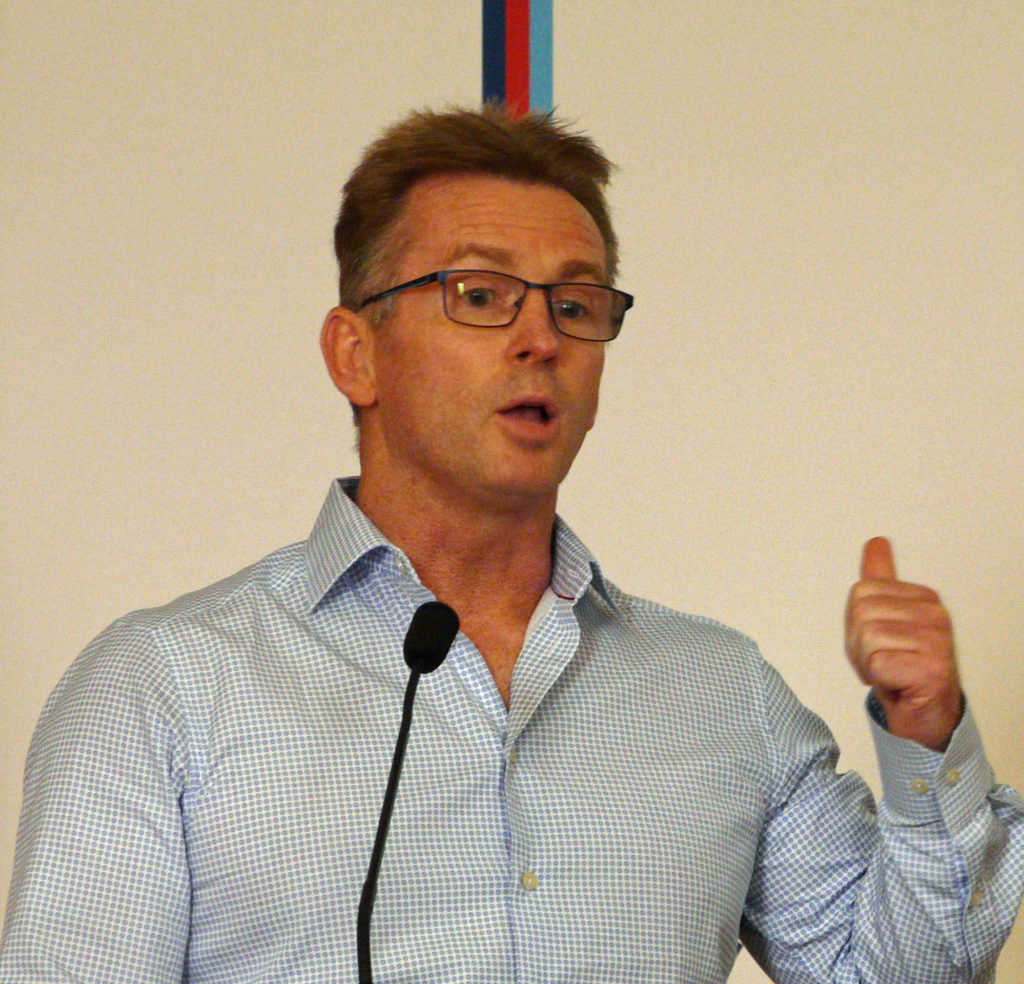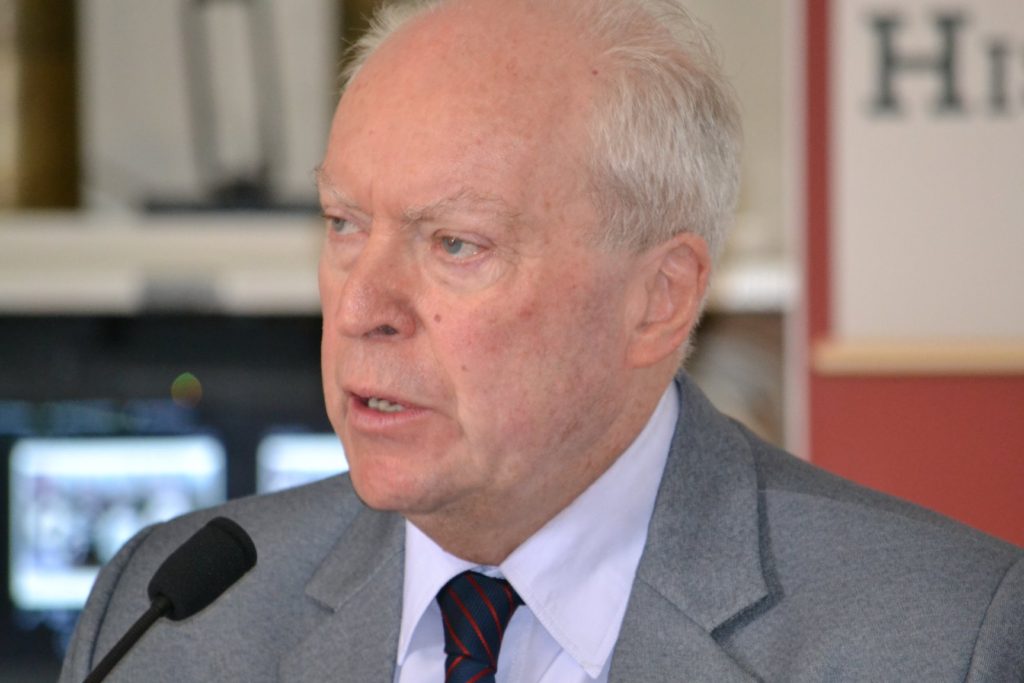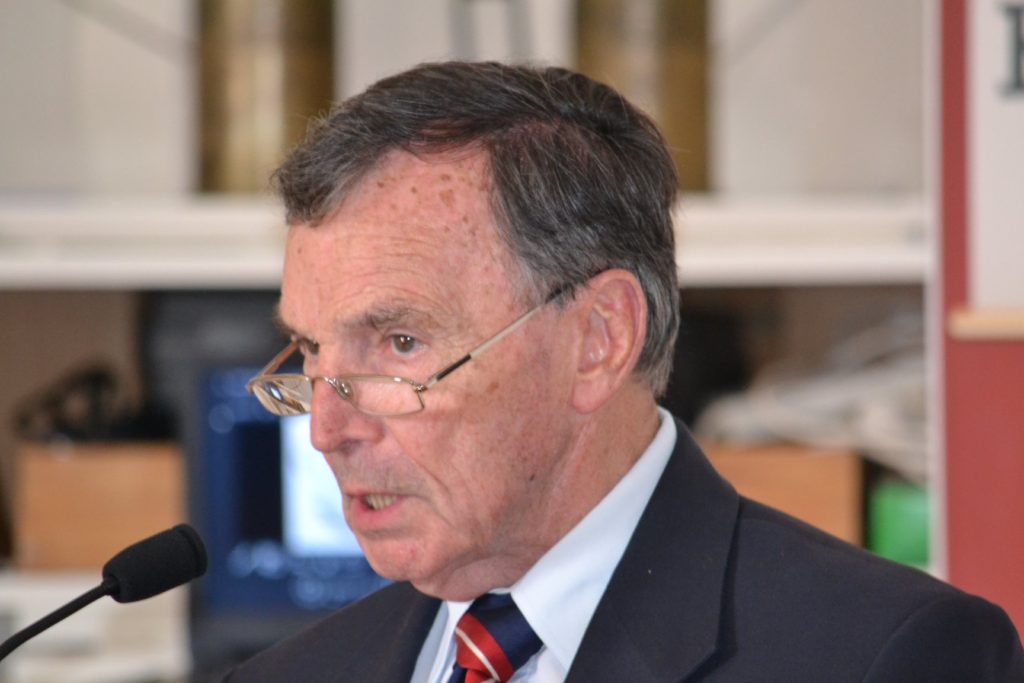The conference of around 45 attendees was opened by convenor Lieutenant Colonel Michael Buckridge followed by the welcome by Major General Jim Barry.

The keynote address, The Impact on Australia and the Return of the AIF was delivered by Dr Meleah Hampton. Historian, Australian War Memorial.
Dr Hampton explained the size of the problem in bringing the diggers home from war. There were 87,000 Australian soldiers in Europe when the armistice occurred on 11 November 1918. In addition, there were a further 60,000 in England and 17,000 in the Middle East. When workers and wives and children (both Australian and foreign) were added to this, the total exceeded 150,000. Given the average troop ship carried only 2,400 people it took 176 voyages to bring the diggers home to Australia. A venture of this size would have taken some time in normal circumstances, but there was a chronic lack of shipping which protracted the process. Shipping was in short supply because all allied nations were trying to get their people home simultaneously while attempting to keep normal freight and other commerce moving.
While slow repatriation rates caused considerable frustration amongst the men, delays suited the Australian government very well. This was because the country had adapted to their absence and would have to readapt to their return. The government feared dangerous unrest if the Diggers came back too soon.
Foreseeing the magnitude of the repatriation process, planning had begun in 1916. This task was taken over by General Sir John Monash immediately after the armistice. He changed the order of repatriating the diggers from one that suited the government. The government decided that those individuals who were more ‘worthy’ or ‘valuable’ should ship first. Monash implemented a simple, easily understood system of first over first back. Key to this was Monash’s acute sensitivity to fairness and his understanding that if the system was seen to be unfair there would be trouble with the remaining Diggers. Evidence of his wisdom can be seen by contrasting the Canadian experience with that of the Australians. The Canadians used government proscribed criteria in determining their repatriation order and in consequence they had to deal with riots and quite a bit of lawlessness whereas the Australian process went smoothly.
In addition, Monash was acutely aware that boredom in those awaiting a passage home would also cause disquiet. He implemented a vast program of training and entertainment with lots of sport to keep the men happy and tired. Many men learned new occupations and trades, and this sometimes involving travelling large distance to learn. As an example, some men were sent to Denmark to study wool growing. Not as many veterans went back to their original jobs as the government hoped. Perhaps overseas skilling contributed to this but just as likely many veterans weren’t going to go back anyway and at least they had useful skills to ease them into their new life. In any event the speaker suspected that those that didn’t return to their original jobs or indeed, back to old towns or suburbs, succeeded better than those that did as fitting veterans back into old groups often proved to be disruptive.
The return of Australians was largely over by February 1920.
The Social Effects of Disillusion and Frustration; The Soldier Settlement Scheme by Professor Marilyn Lake, AO. Professorial Fellow in History, Melbourne University with a new book Progressive New World published by Harvard University Press.
Prior to the Great War, Australia was considered one of the most socially progressive nations in the world. One indicator of this was the speed at which Australians got the right to vote. Men attained universal suffrage in the late 1800s while in 1902 Australian women were the first to achieve the vote. In addition, Australia had implemented many labour reforms including the introduction of a living wage. Visitors crossed the oceans to study Australia’s social progress.
The war changed all that. Communities became divided by a number of forces. Firstly, only half of those eligible to enlist did so resulting in resentment, expressed, but not limited to the ‘white feather’ movement. Secondly, the conscription votes pushed by Labor Prime Minister Billy Hughes caused deep social divisions especially as he specifically targeted women to ‘do their patriotic duty.’ More concerned about their sons than Britain, they probably didn’t. And thirdly, amongst the soldiers who were returned to Australia as unsuitable there were a large proportion of men with problem behaviours which were the cause of their being unsuitable in the first place. This group contributed to rioting in the streets.
Even those soldiers without discipline problems caused social dislocation on returning to Australia both during and after the war. While unwounded men did not fit easily to their original slots, physically and mentally wounded men were especially difficult to accommodate at work or at home. Relationships broke down. Many men suicided – some soon after returning but this continued over an extended period. The nation grieved for the living and the dead and those that returned and those that didn’t.
Soldier settlement schemes got underway in part to get the returning men out of the cities so as to isolate the problems in remote areas. Dressed up somewhat as a cure to get veterans out into the ‘clean, purifying country air’, isolation often made things worse. While the schemes had some successes, in general the land allocated to it was poor and the new soldiers insufficiently skilled, capable and capitalised. It and other repatriation failures increased distrust of the government. The political system broke down. Labor lost power and only held it for two of the next twenty-one years. Political parties made up of peculiar alliances formed and disintegrated while the RSL formed to serve the needs of disgruntled returned soldiers.
Australia became inward looking. Governments formed by Billy Hughes’ and Stanley Bruce’s Nationalist parties became much more British oriented. The can-do spirit Australia had prior to the war was lost. It was as if the nation had developed post-traumatic stress.
Australia and the World after 1919: The Tentative Nation by Professor Peter Edwards, AM. Vice-Patron MHHV.
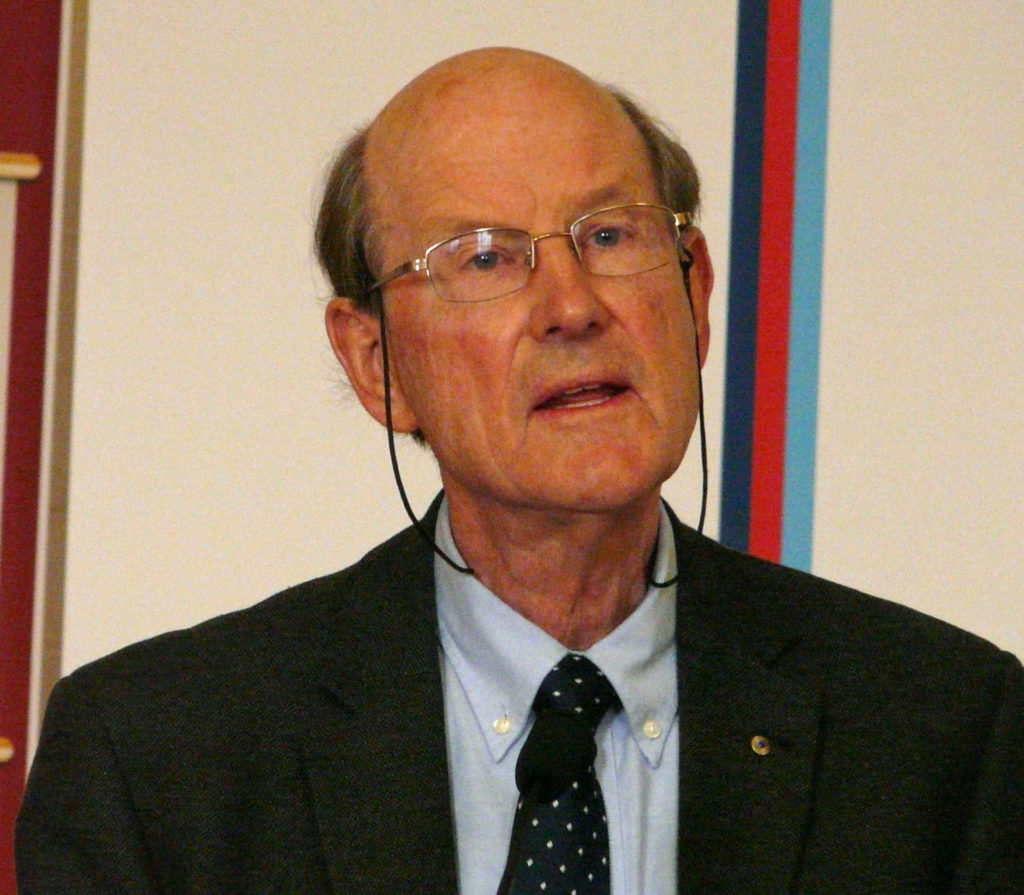
In a presentation that dovetailed neatly into the previous one, Professor Edwards pointed to the impacts of the war on Australia. The vigour and confidence of pre-war Australia demonstrated by uniting six colonies into a confident independent nation was lost post-war as it morphed into a timid inward-looking country. After the war, foreign policy was what ex-Britisher Prime Minister Billy Hughes, and his successors in office, said it was.
Australia doubled down on Empire and looked almost exclusively to Britain for leadership, men, money and most of all for military and financial protection. Australia relied strongly on the assumption that Britain would consult the dominions before making any commitments – which of course it didn’t. Thus, unlike Canada, South Africa and the Irish Free State, Australia did not set up a robust diplomatic service nor foreign affairs departments. In consequence, Australia had no consistent diplomatic relationships outside the dominion circle of influence because they believed it would the disrupt unity of the British Empire. It didn’t even have much of a diplomatic presence in Great Britain to champion its interests.
Most seriously it had no presence in Washington. The reason for this was partly the cost of providing a permanent overseas presence there as well as other countries. There was also a problem finding men of suitable calibre to fill positions of all levels in all walks of life. It is suggested that death and disablement of a disproportionally large number of high calibre men during the war was a contributing reason for this.
Menzies made the decision to put an embassy in Washington on his first day in office in 1939 although he remained staunchly British dependant.
Foreign policy and, in particular, defence policy were based on the wishful thinking that Britain would come to Australia’s aid in a crisis. The now infamous Singapore strategy was the centre piece of this strategy. This strategy was always flawed. It was particularly so after the Naval Treaty of 1922 reduced Britain’s fleets from 3 to 2. In World War II the Japanese entered the war once one British fleet was engaged in the Atlantic and the other in the Mediterranean leaving Singapore along with the rest of the Pacific empty of the British Navy.
The Repatriation Commission. Mr Mike O’Meara, OAM. Former Deputy Commissioner Victoria, Department of Veterans’ Affairs.
Mr O’Meara began by citing a report about the Commission that stated it was complex, difficult to navigate and not fit for purpose. Surprisingly this report was delivered in 2018. He went on to say that this finding was eerily consistent with when the Commission started.
The chaos of dealing with returned soldiers of the Boer war led to the realisation that the system needed to be much better for WWI. Unfortunately, there was no road map for doing this in Australia or elsewhere. Adding to the difficulties was Australian federation had occurred a mere 14 years prior to the war so there were few well established national institutions of any kind.
The Commission started from nothing and as they were feeling their way there were continuing issues about what was to be covered and what was not. The first decision was to provide compensation for wounds and disabilities with funds administered by the Federal Treasury which highlighted the fact that there were no criteria for defining and evaluating wounds and disabilities. The war pensions bill of 1914 introduced by Labor supplied criteria and legislated that wounds and disability had to be evaluated by doctors against those criteria. Following this there was a big ramp up in the use of doctors and others working for the Commission both in private practice, hospitals, limb factories, hostels and so on.
Prime Minister Billy Hughes got behind the Commission but its real long-term champion was Federal Senator Edward Millen. Millen became first minister in 1917 after giving the Commission a rousing speech in Federal Parliament.
The Commission was intended to be a one stop shop but it was always underfunded and inefficient. This was partly because its role kept evolving. It was also partly because it was staffed with ex-service personnel for whom the ‘file’ was all important. It became very bureaucratic. Waiting times for ‘clients’ were huge. There was too much emphasis on sustenance payments.
Mr O’Meara concluded that the Commission was visionary, bold and internationally ground breaking when it was set up. He concluded that for all its faults, if it did not exist, suffering would have been incomparably greater.
The Search for Loved Ones. Mr Scott Bennett. Author of The Nameless Names.
Of the 62,000 Australian’s killed in the war, around a third of those were listed as missing – which meant no remains could be identified for burial. On the Western Front, this was most usually caused by the constant churning of the battle ground by shelling which buried, unburied and reburied the dead as it atomised their bodies.
Tens of thousands of Australian families did not know the fate of their loved ones. This caused immense grief; grief which echoed through their lives and into those of subsequent generations as whole families were caught between hanging on and letting go.
To illustrate, Mr Bennett used the example of three families.
The first was the family of Mordaunt Reid. This example also reinforces the point made by previous speakers that too many valuable qualified people were lost to Australia in this war. Mordaunt Reid was an electrical engineer who set up the electricity system in Coolgardie where he lived with his wife Pauline, a qualified nurse. Both were highly engaged in their community.
Reid was initially wounded in the thigh while fighting in Gallipoli and was left in the field of battle. The fighting front reversed past him and he was left in enemy territory. He was not recovered nor were his remains ever found. In seeking to know his fate, Pauline was variously told he was in hospital in Cairo or that he was missing. She went to Cairo, working as a nurse during the day and looking for her husband in vain the rest of the time. She was told he was in London, so she went there as a nurse and continued looking for him until she returned home in 1919. At Coolgardie she started and ran a private nursing home with her husband’s sisters. For the rest of her life she was active in women’s issues for which she received the OBE. While she eventually remarried, she never stopped searching for Reid. She frequently travelled back to Europe to try to learn the fate of her husband.
The fate of Reid’s mother was particularly tragic. She lost another son on the same day that Mordaunt was killed. Having no means of support, she was reduced to cleaning houses to survive. She kept writing to the War Graves Commission. While Mordaunt was never found the other son’s remains were located in 1921.
The Phlaume family were German flour millers in South Australia and significant employers in their community. Under pressure to prove their loyalty three out of four sons enlisted within a week of the Gallipoli landings – the fourth had a disability that barred him. One was killed at Fromelles and another at Polygon Wood. The son who joined the Flying Corps survived. The body of one son was found and the other wasn’t. The Phlaume family never fully recovered.
The Allen family were Queensland cane cutters. They also had three fit sons and one disabled with polio. All three able sons enlisted. Two brothers disappeared during the advance at Messines in 1917 and the third died at Villes Brettenon. The family wanted to find the spot where the two were lost. Eventually the father only wanted some kit from the boys but that could not be provided. The Community put up a statue, but the mother never recovered from the loss of her sons.
The Coup that Never Was. Professor Roland Perry, OAM. Author and Historian.
In 1923, police in Melbourne went on strike for higher pay and better pensions. With the police off duty, there was opportunistic rioting in town. Monash was asked by the government to restore the peace. In 24 hours he raised a force of 5,000 diggers. They took over police stations and quelled the riots. The next day, Monash attended the races and was lauded as a hero.
At the same time the Federal Government was in chaos and Monash’s handling of the riots so impressed that he was asked to raise and army and take the government by force. Monash gave a positive ‘no’ to every repeated appeal to his ‘patriotism’, including a particularly strong appeal from the extremely influential Grimwade family. His reason was always the same. He believed in the rule of law, the constitution, the ballot box and educating the public. He refused to be lured into high treason. He was adamant that if people wanted the government removed, they should organise a political party that could defeat the government in an election.
Monash was promoted to full general and sent on a three-month mission to India while the crisis faded. The talk of armed takeover died with Monash.
Professor Perry noted that this event is little known these days because nothing really happened. No-one died and peace was restored.
The Inter-Allied Games of 1919. Major General Jim Barry, AM, MBE, RFD, ED.
Major General Barry stated that the interallied games were a superb diversion designed to keep the men occupied and interested while they awaited repatriation. It also had the secondary objective of cementing ties between the men of different nations that had fought on the field of battle.
The Games were conceived, organised and hosted by General Pershing, commander of the American forces. He invited 29 nations, colonies or territories to compete – 18 of those accepted. The event was to be held from 22 June to 6 July 1919 in the newly constructed Pershing Stadium in Paris.
During the games, nearly 1,500 athletes competed in front of a crowd of half a million spectators. The events included some unorthodox events including tug-of-war and hand grenade throwing. Bayonetting was considered as an event but abandoned as no satisfactory way could be found of judging it.
In preparation, the Australian tug-of-war team practiced against the London police team.
By the time the games started, Australia had repatriated a large number of men and as a consequence could only field 63 competitors who competed in 9 out of the 18 sports. They performed strongly in boxing and swimming. They also uncovered three noted tennis players, one of whom, Gerrard Patterson, went on to win twice at Wimbledon.
The winner of the hand grenade competition hurled his bomb 73 metres. He was a US chaplain who later went on to star in western movies.
All in all, the Games were considered a great success.
In conclusion
This thoroughly enjoyable and informative event was eloquently summarised by Major General Barry and closed by the convenor Lieutenant Colonel Buckridge.
The Search for Loved Ones. – Mr Scott Bennett. Author of The Nameless Names.
The Coup that Never Was. – Professor Roland Perry, OAM. Author and Historian.
The Inter-Allied Games of 1919. – Major General Jim Barry, AM, MBE, RFD, ED.
Photos from the Aftermath Conference can be seen here on Facebook
Contact Brent D Taylor about this article.
